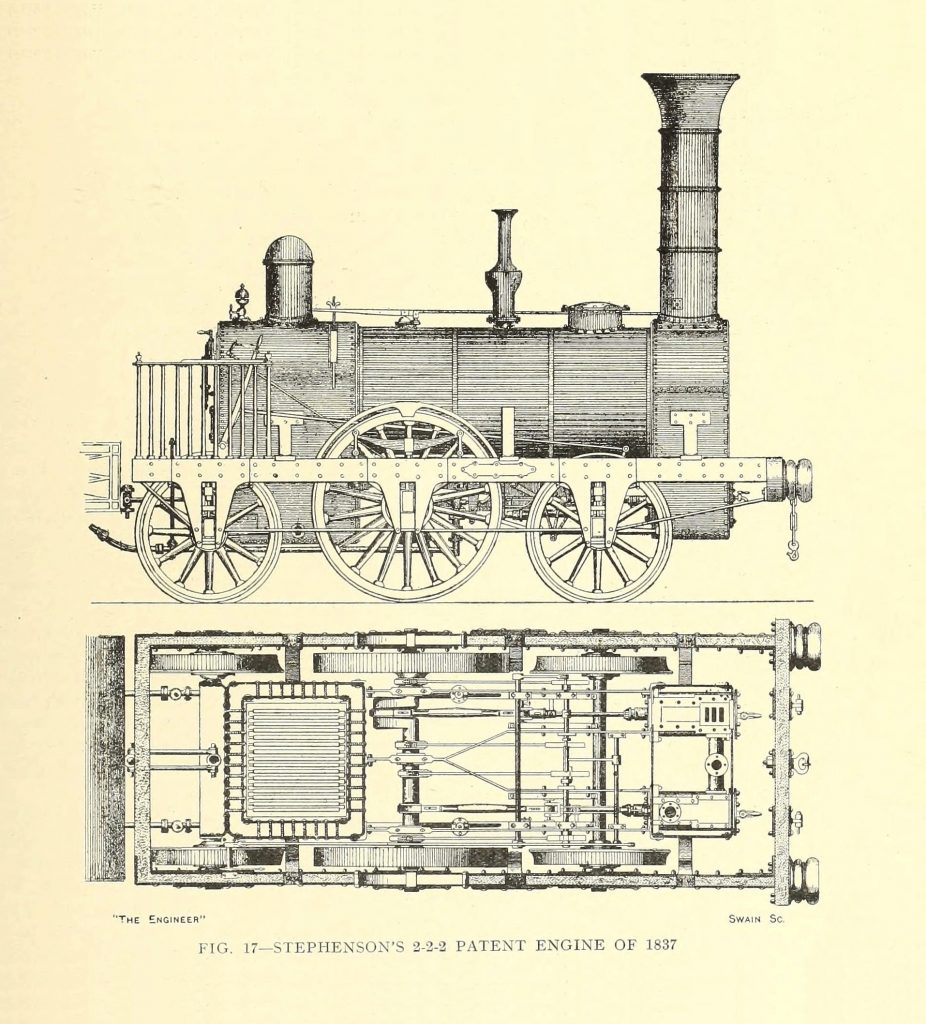
THE RAILWAY LOCOMOTIVE
The first railway line in the world connected the towns of Stockton and Darlington in North England. It was built in 1825 to demonstrate the business opportunities made possibly by George Stephenson’s invention of a steam-powered railway locomotive. The development of the steam engine made it possible; a contraption which generated steam by heating water via burning coal, and using the steam to power movement via pistons.
By 1900, Britain had over 22,000 miles of railway track moving passengers and cargo to power industry. Railways and their steam-powered locomotives had also been exported to countries of empire across the globe.
Vast quantities of coal were mined from the ground internationally to feed the massive demand for steam engines of all sorts, including railway locomotives. This drastic acceleration in the burning of carbon-rich fuel led to a significant increase in air particle pollution which is evidenced, for example, in the content of polar ice cores.
This story is part of the new EarthMuseum Air We Breathe Learning Programme being launched in early 2026. Register above to receive further information in Autumn 2025.